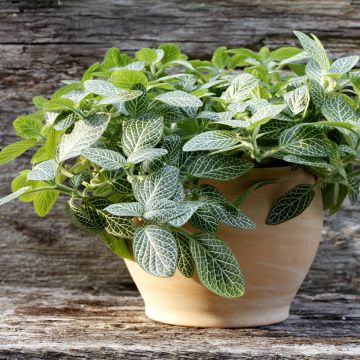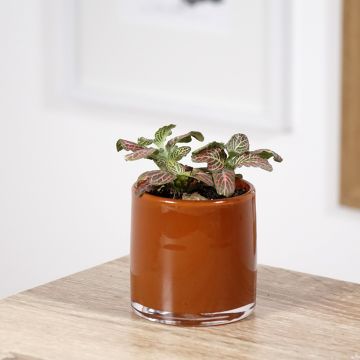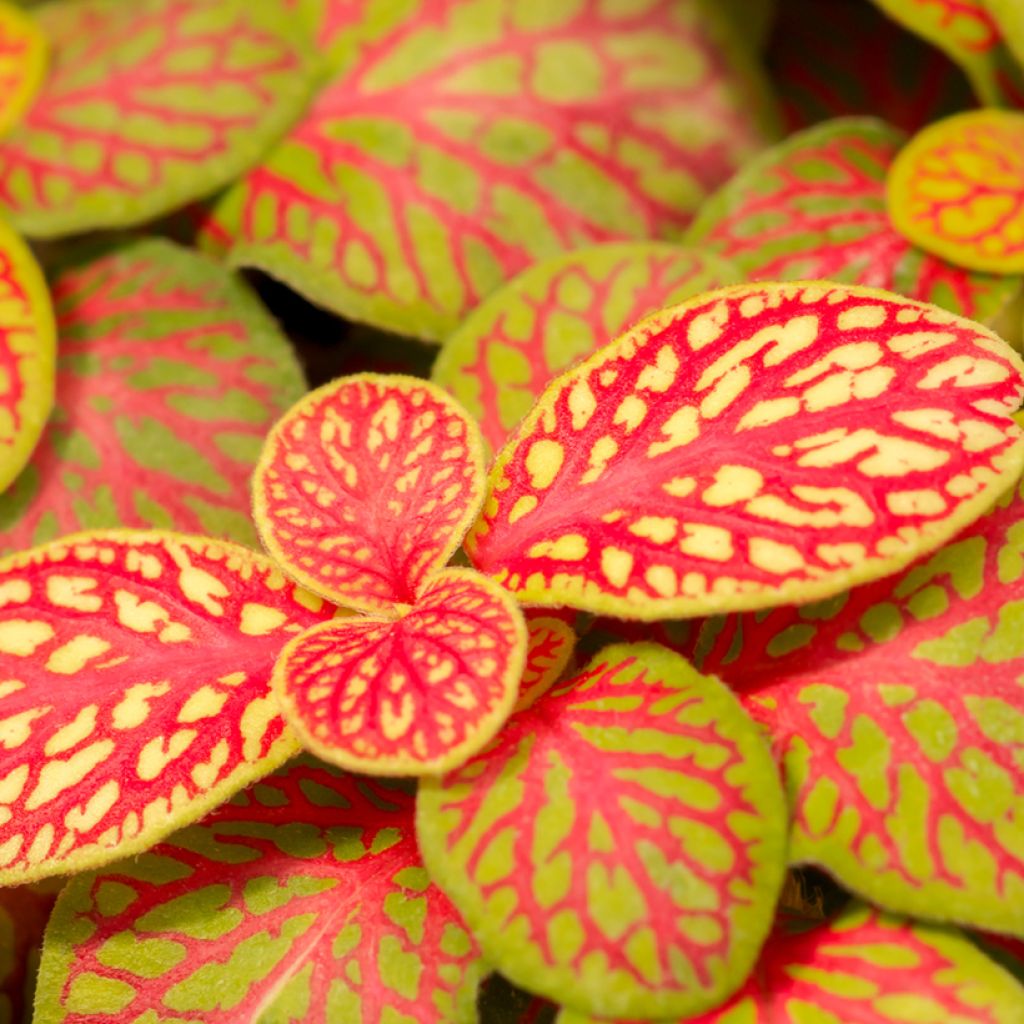

Fittonia albivenis Skeleton - Nerve plant
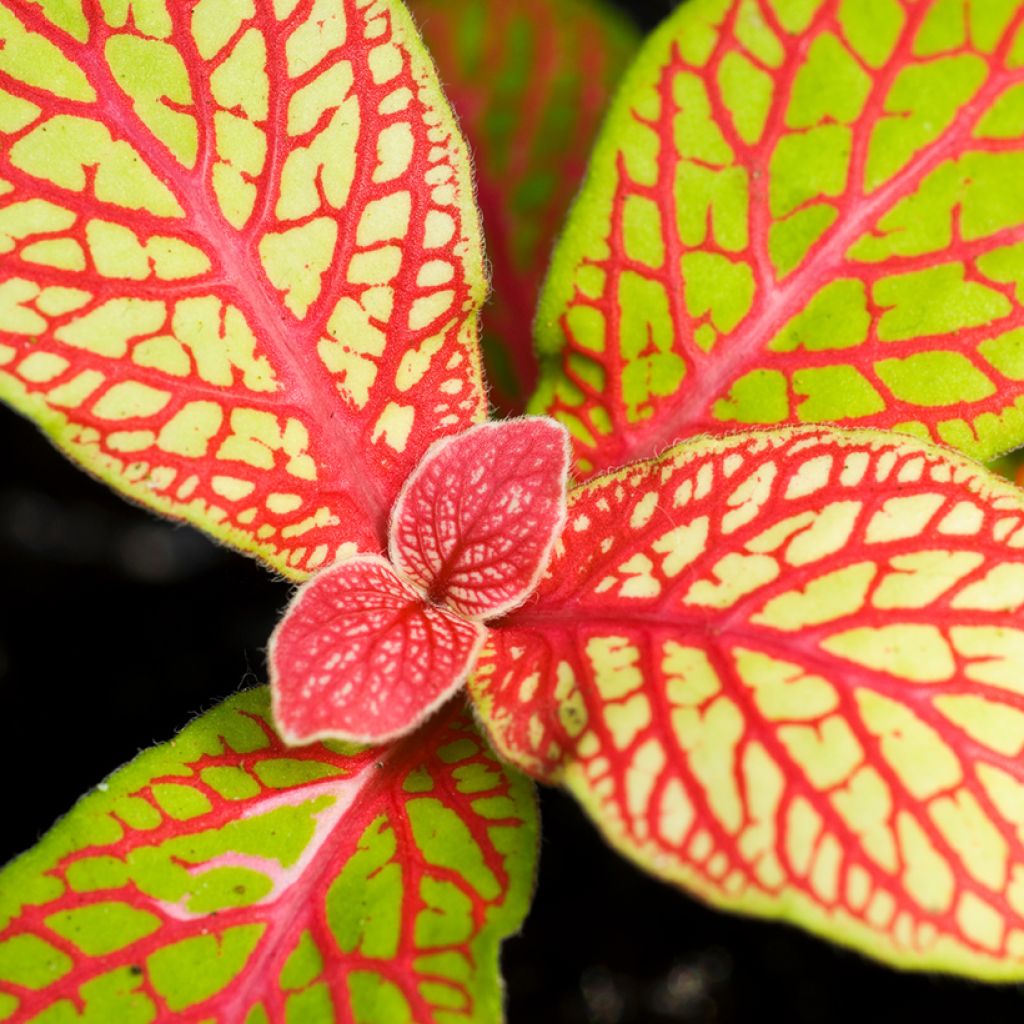

Fittonia albivenis Skeleton - Nerve plant
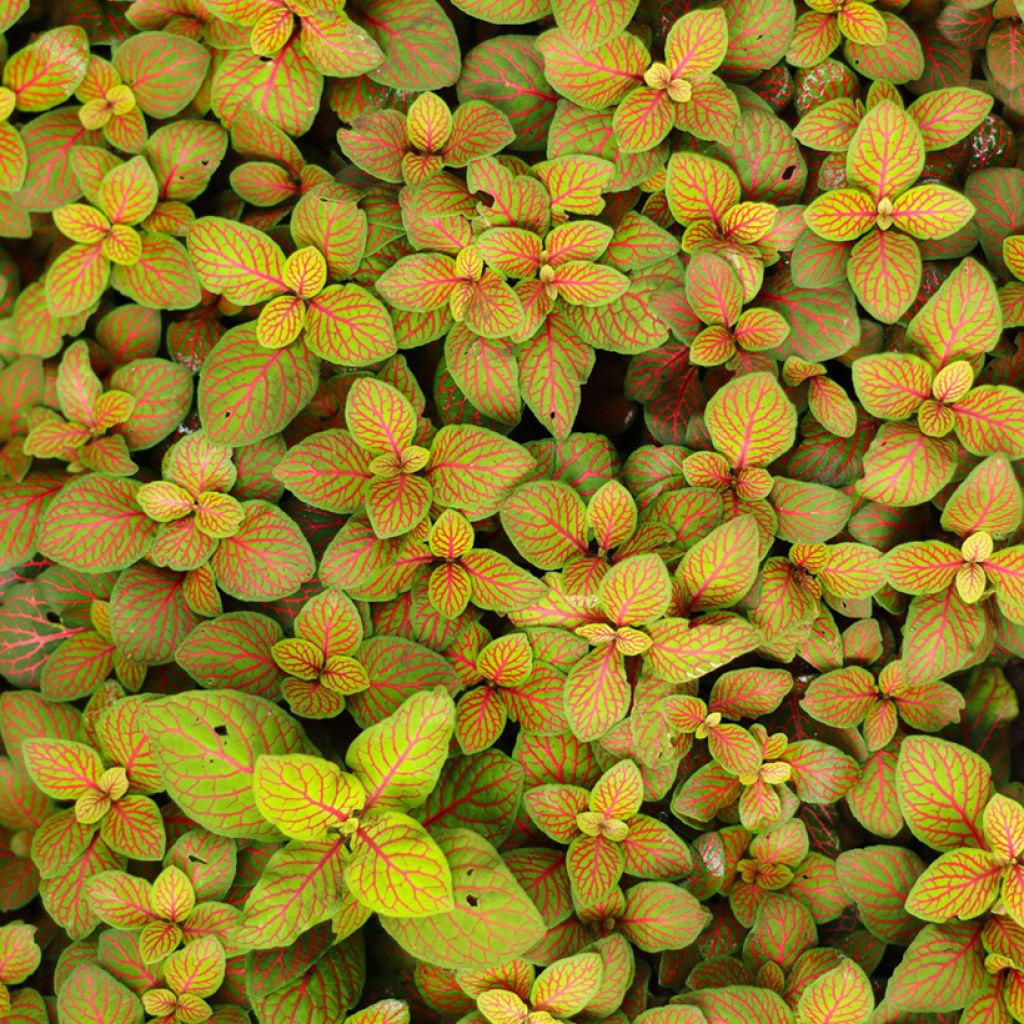

Fittonia albivenis Skeleton - Nerve plant
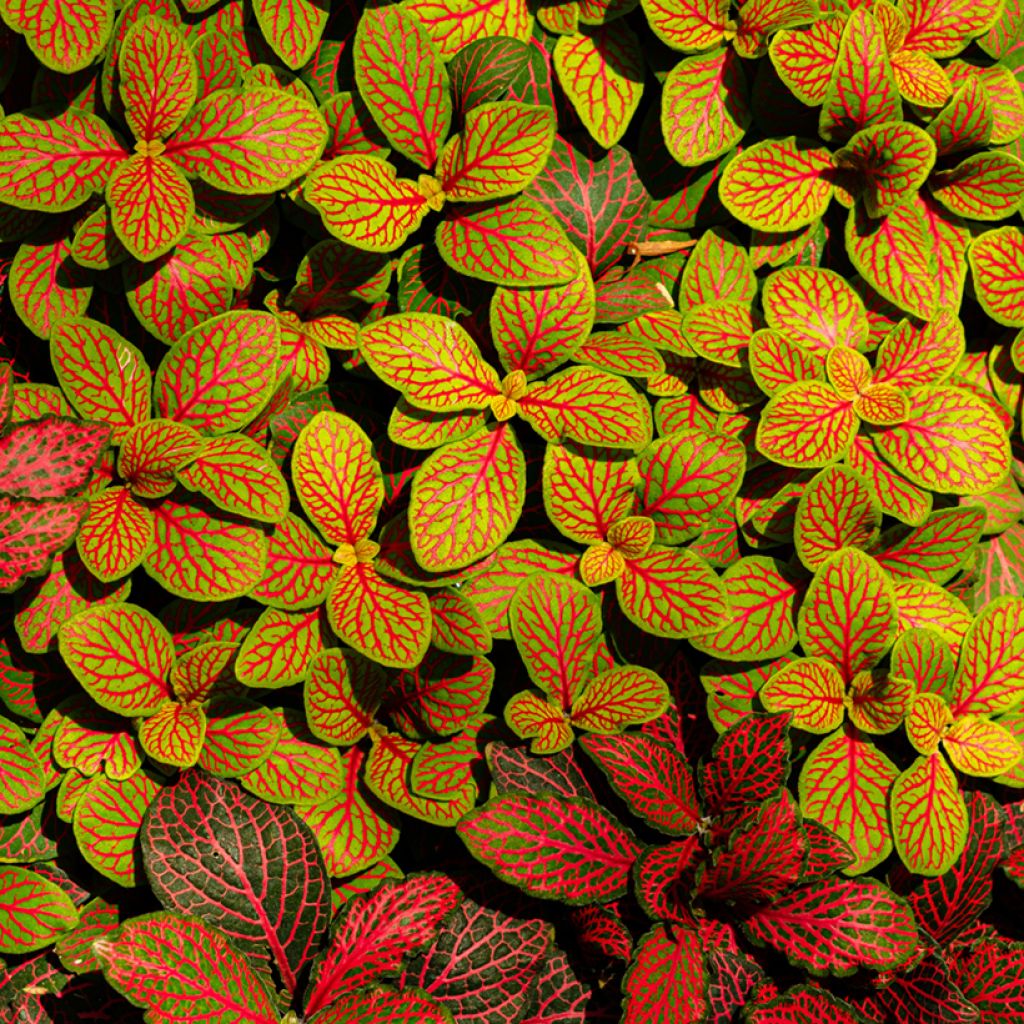

Fittonia albivenis Skeleton - Nerve plant
Fittonia albivenis Skeleton - Nerve plant
Fittonia albivenis Skeleton
Nerve plant, mosaic plant
Why not try an alternative variety in stock?
View all →This plant carries a 30 days recovery warranty
More information
We guarantee the quality of our plants for a full growing cycle, and will replace at our expense any plant that fails to recover under normal climatic and planting conditions.
Description
The Fittonia 'Skeleton' is a vibrantly coloured cultivar of this small creeping plant native to the tropical forests of South America, prized for its unique contrasting foliage. In striking "flash" tones, it develops leaves with a lamina ranging from green to yellow, very bright, adorned with numerous vivid red veins. Very compact, it is perfect for a terrarium, where it thrives in high ambient humidity. It can also be grown in a small pot, quickly covering the surface before its trailing stems add an extra touch of charm. It adapts well to medium-light environments.
Belonging to the Acanthaceae family, like garden Acanthus, the Fittonia albivenis 'Skeleton' is derived from Fittonia albivenis. Its botanical synonym is Fittonia verschaffeltii 'Skeleton'. It is also called Nerve Plant or Mosaic Plant in reference to its ornamental, beautifully veined foliage. The Fittonia albivenis species originates from the lush tropical forests of South America, initially from regions of Colombia and Peru. This evergreen and creeping undershrub thrives under the dense canopy. Indoors, it reaches a maximum height of 15 cm and spreads about 30 to 50 cm. Its ovate leaves, which can remain small or grow up to 7 cm long, display a mix of green-yellow with prominent red veins. It may occasionally produce small creamy-white tubular flowers nestled between the bracts. However, many growers prefer to remove the buds, as they tend to detract from the decorative appeal of the foliage.
The Fittonia 'Skeleton' is a tropical species grown as a houseplant in our regions. It enjoys bright indirect light and tolerates lower light conditions, slightly away from windows, always without direct sunlight, with ambient humidity above 60% and temperatures between 18 and 24°C. Avoid dropping below 15°C. Use a well-draining soil mix and keep it consistently moist, but not waterlogged.
The Fittonia 'Skeleton' loves high ambient humidity, making it ideal for planting in a terrarium or in a pot among plants with similar requirements. It forms a carpet of highly decorative and colourful leaves. The creeping nature of this plant also makes it perfect for hanging baskets, where its trailing and trailing stems can be showcased. Perfect for adding a touch of exoticism and colour, it fits into all spaces, including bathrooms or kitchens. Pair it in a terrarium with plants sharing similar needs, such as creeping Ficus pumila, which thrive under the same conditions.
Report an error about the product description
Fittonia albivenis Skeleton - Nerve plant in pictures


Foliage
Plant habit
Botanical data
Fittonia
albivenis
Skeleton
Acanthaceae
Nerve plant, mosaic plant
Cultivar or hybrid, South America
Other Fittonia - Nerve plant
View all →Location
Location
Maintenance and care
Potting advice, substrates and fertilisers
Houseplant care
Disease and pest advice
Maintenance and care
This item has not been reviewed yet - be the first to leave a review about it.
Haven't found what you were looking for?
Hardiness is the lowest winter temperature a plant can endure without suffering serious damage or even dying. However, hardiness is affected by location (a sheltered area, such as a patio), protection (winter cover) and soil type (hardiness is improved by well-drained soil).

Photo Sharing Terms & Conditions
In order to encourage gardeners to interact and share their experiences, Promesse de fleurs offers various media enabling content to be uploaded onto its Site - in particular via the ‘Photo sharing’ module.
The User agrees to refrain from:
- Posting any content that is illegal, prejudicial, insulting, racist, inciteful to hatred, revisionist, contrary to public decency, that infringes on privacy or on the privacy rights of third parties, in particular the publicity rights of persons and goods, intellectual property rights, or the right to privacy.
- Submitting content on behalf of a third party;
- Impersonate the identity of a third party and/or publish any personal information about a third party;
In general, the User undertakes to refrain from any unethical behaviour.
All Content (in particular text, comments, files, images, photos, videos, creative works, etc.), which may be subject to property or intellectual property rights, image or other private rights, shall remain the property of the User, subject to the limited rights granted by the terms of the licence granted by Promesse de fleurs as stated below. Users are at liberty to publish or not to publish such Content on the Site, notably via the ‘Photo Sharing’ facility, and accept that this Content shall be made public and freely accessible, notably on the Internet.
Users further acknowledge, undertake to have ,and guarantee that they hold all necessary rights and permissions to publish such material on the Site, in particular with regard to the legislation in force pertaining to any privacy, property, intellectual property, image, or contractual rights, or rights of any other nature. By publishing such Content on the Site, Users acknowledge accepting full liability as publishers of the Content within the meaning of the law, and grant Promesse de fleurs, free of charge, an inclusive, worldwide licence for the said Content for the entire duration of its publication, including all reproduction, representation, up/downloading, displaying, performing, transmission, and storage rights.
Users also grant permission for their name to be linked to the Content and accept that this link may not always be made available.
By engaging in posting material, Users consent to their Content becoming automatically accessible on the Internet, in particular on other sites and/or blogs and/or web pages of the Promesse de fleurs site, including in particular social pages and the Promesse de fleurs catalogue.
Users may secure the removal of entrusted content free of charge by issuing a simple request via our contact form.
The flowering period indicated on our website applies to countries and regions located in USDA zone 8 (France, the United Kingdom, Ireland, the Netherlands, etc.)
It will vary according to where you live:
- In zones 9 to 10 (Italy, Spain, Greece, etc.), flowering will occur about 2 to 4 weeks earlier.
- In zones 6 to 7 (Germany, Poland, Slovenia, and lower mountainous regions), flowering will be delayed by 2 to 3 weeks.
- In zone 5 (Central Europe, Scandinavia), blooming will be delayed by 3 to 5 weeks.
In temperate climates, pruning of spring-flowering shrubs (forsythia, spireas, etc.) should be done just after flowering.
Pruning of summer-flowering shrubs (Indian Lilac, Perovskia, etc.) can be done in winter or spring.
In cold regions as well as with frost-sensitive plants, avoid pruning too early when severe frosts may still occur.
The planting period indicated on our website applies to countries and regions located in USDA zone 8 (France, United Kingdom, Ireland, Netherlands).
It will vary according to where you live:
- In Mediterranean zones (Marseille, Madrid, Milan, etc.), autumn and winter are the best planting periods.
- In continental zones (Strasbourg, Munich, Vienna, etc.), delay planting by 2 to 3 weeks in spring and bring it forward by 2 to 4 weeks in autumn.
- In mountainous regions (the Alps, Pyrenees, Carpathians, etc.), it is best to plant in late spring (May-June) or late summer (August-September).
The harvesting period indicated on our website applies to countries and regions in USDA zone 8 (France, England, Ireland, the Netherlands).
In colder areas (Scandinavia, Poland, Austria...) fruit and vegetable harvests are likely to be delayed by 3-4 weeks.
In warmer areas (Italy, Spain, Greece, etc.), harvesting will probably take place earlier, depending on weather conditions.
The sowing periods indicated on our website apply to countries and regions within USDA Zone 8 (France, UK, Ireland, Netherlands).
In colder areas (Scandinavia, Poland, Austria...), delay any outdoor sowing by 3-4 weeks, or sow under glass.
In warmer climes (Italy, Spain, Greece, etc.), bring outdoor sowing forward by a few weeks.



































